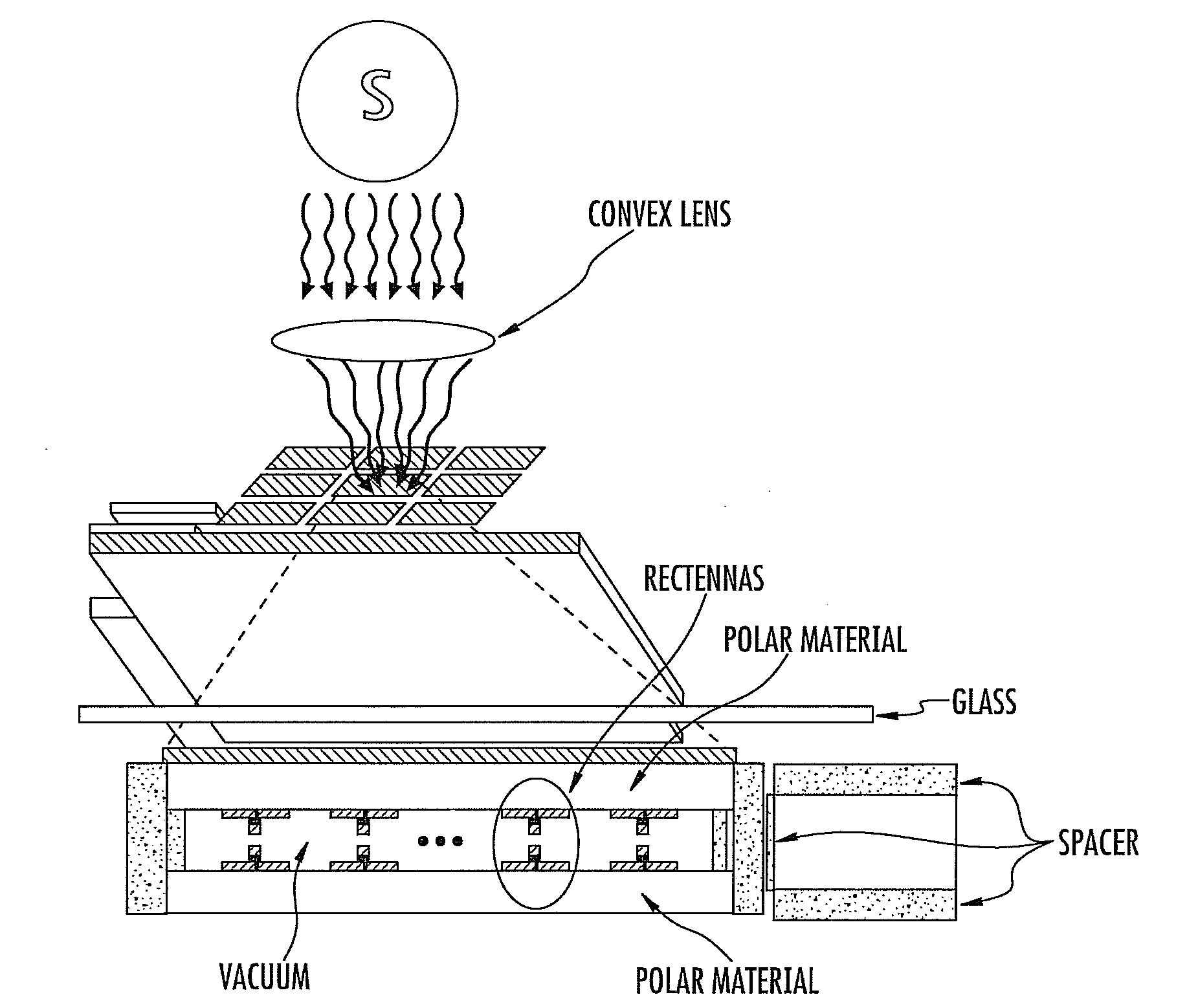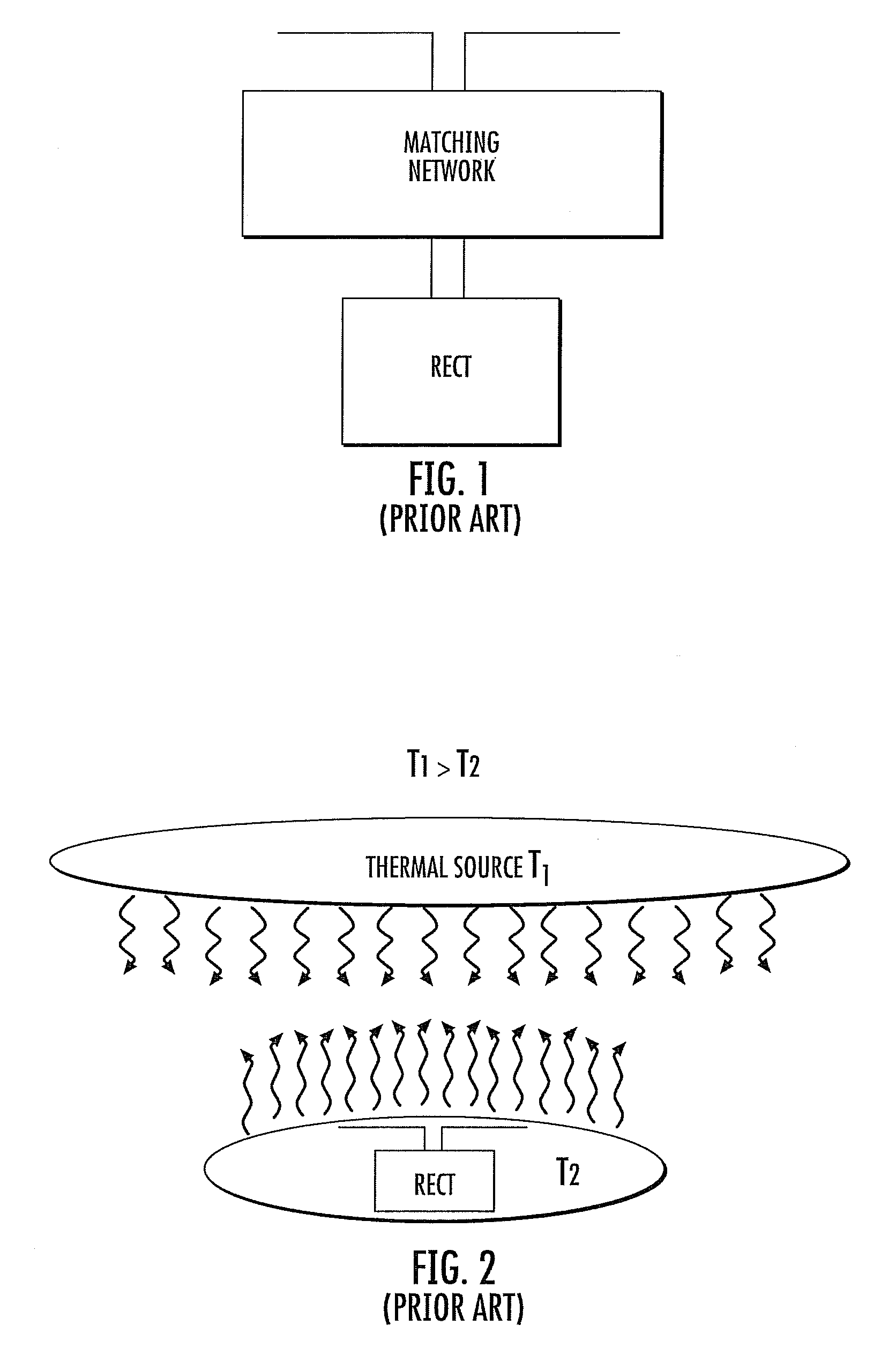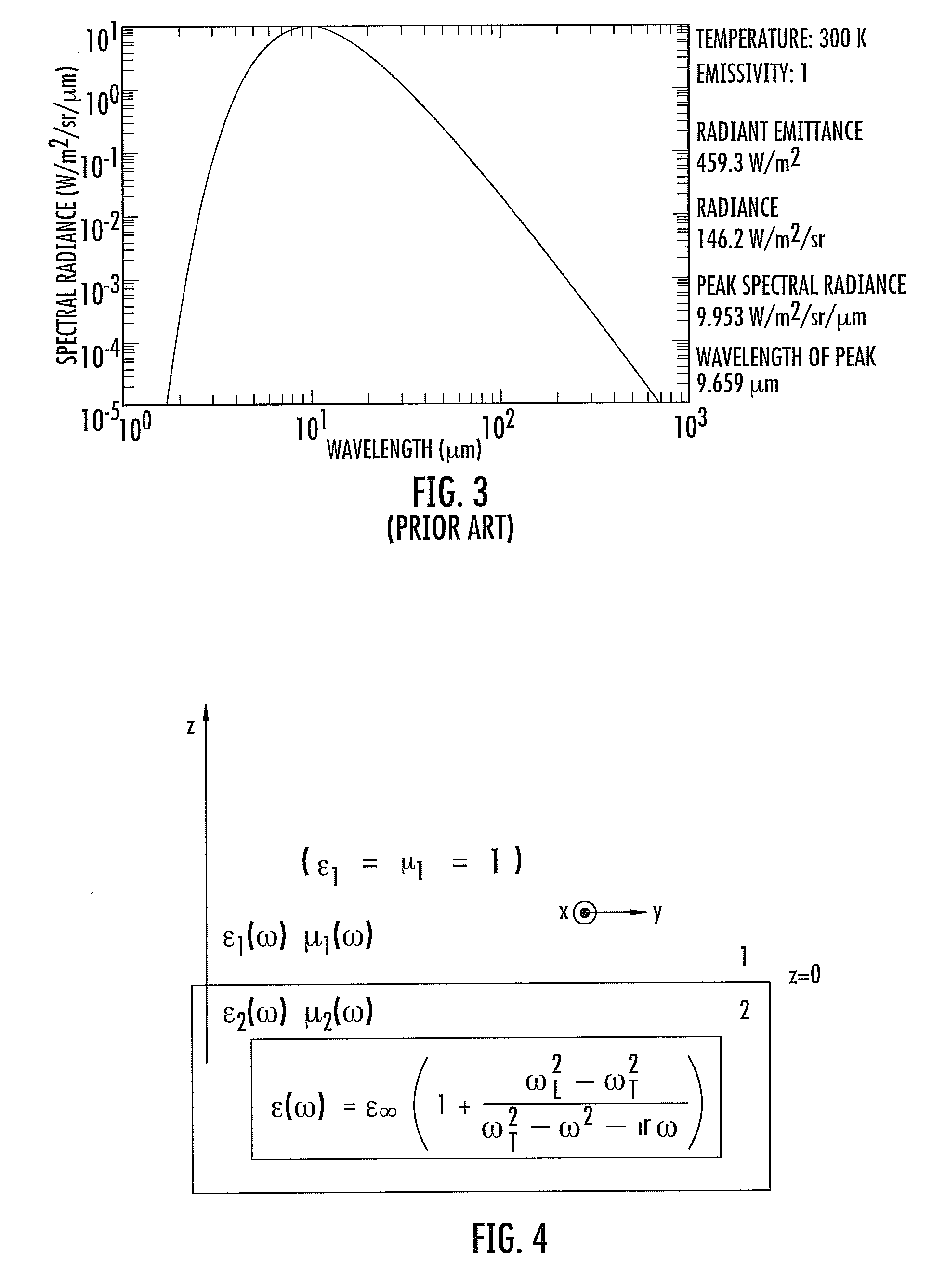Device for transforming electromagnetic ir energy from spatially incoherent, low-power density, broad-band radiation in spatially coherent, high-power density, quasi-monochromatic radiation
a technology of electromagnetic ir energy and electromagnetic field, which is applied in the field of capturing infrared electromagnetic energy, can solve the problems of increasing the intensity of cumulatively captured ac signal, limiting the sensitivity and effectiveness of em energy conversion system, and achieving large power yield
- Summary
- Abstract
- Description
- Claims
- Application Information
AI Technical Summary
Benefits of technology
Problems solved by technology
Method used
Image
Examples
Embodiment Construction
[0026]A description of this present disclosure cannot leave out of consideration the concept of superficial wave, that is known in the scientific literature. Let us consider the separation interface between two dielectric mediums, the first of which is the vacuum (1) and the second is a polar material (2) as depicted in FIG. 4. A dielectric is called polar when its so-called dielectric “constant” depends from the working frequency ω, according to the mathematical model illustrated in FIG. 4 for the second material (2).
[0027]A superficial wave is a particular approach of the Maxwell equation that is obtained for the frequencies at which the following condition is satisfied: real part of ε2(ω)=−1. This approach represents a signal that propagates along the separation surface between the two mediums (1) and (2) and that decreases exponentially in the direction perpendicular to the interface.
[0028]In this situation, the module of the wave vector K tends to infinity, as shown in FIG. 5. ...
PUM
 Login to View More
Login to View More Abstract
Description
Claims
Application Information
 Login to View More
Login to View More - R&D
- Intellectual Property
- Life Sciences
- Materials
- Tech Scout
- Unparalleled Data Quality
- Higher Quality Content
- 60% Fewer Hallucinations
Browse by: Latest US Patents, China's latest patents, Technical Efficacy Thesaurus, Application Domain, Technology Topic, Popular Technical Reports.
© 2025 PatSnap. All rights reserved.Legal|Privacy policy|Modern Slavery Act Transparency Statement|Sitemap|About US| Contact US: help@patsnap.com



